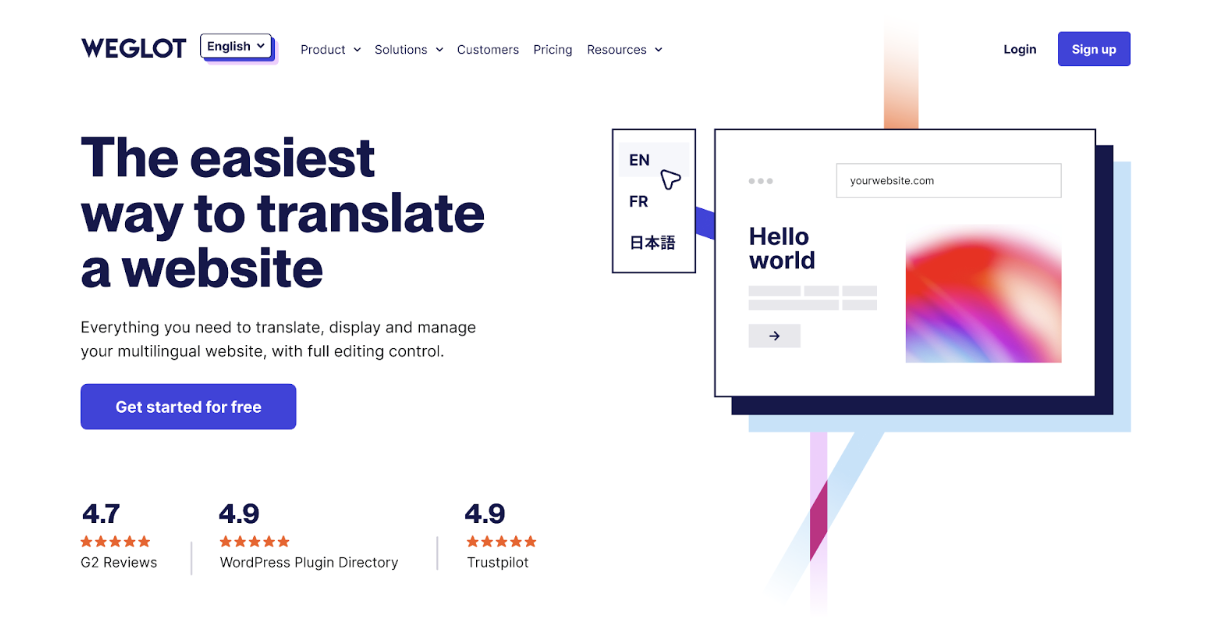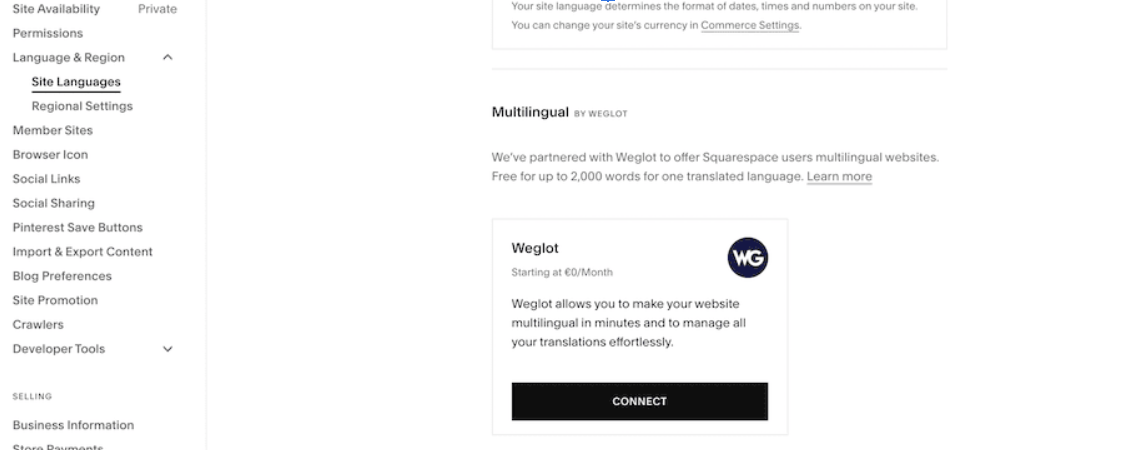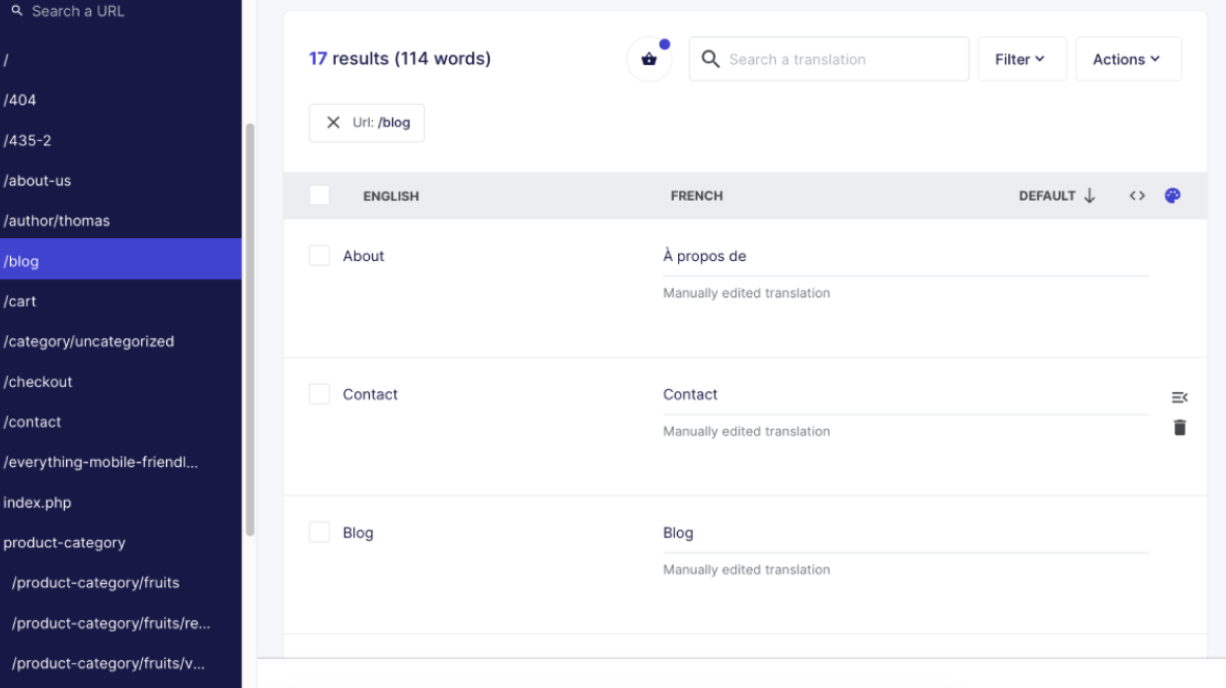Website Translation vs Website Localization: Personalizing for New Markets
Online ecommerce has many advantages over typical brick-and-mortar businesses, such as helping you reach a diverse, global customer base. But one challenge is the need to successfully deliver content in different languages, which means more than simply translating your site and pushing it live.
You have to localize your content in order to make genuine connections with different cultures and backgrounds. “Localizing” your site is just as vital as its translation because offering a personal experience can net you greater sales and income.
This post will explain the differences between translation and localization, along with discussing some best practices you can put in place and tools you can use to efficiently translate your site.
What is website translation?
Website translation means converting content from one language to another. This can be for any number of reasons, but your primary goal is to help improve your user experience (UX). This is a vital concept because having a better UX can boost your traffic, sales, reputation, and income.
The result? The end user gets content in their native or first language, which reduces the friction between browsing and buying. If your online store targets anyone who may speak a second language, a translation strategy is important. This is also true if your site targets local users who speak a different primary language.
What is website localization?
In contrast, localization is tailoring content to a specific locale or community. This is not always related to translation. For instance, you may choose to present dates and times in a format typical for a specific region, such as 2023-11-01 for Japan, and November 1st, 2023 for the United States. Another example of localization could be timezone adjustments.
While you can also adapt measurements, phone numbers, and formats in this way, there’s even more to consider, such as colloquialisms, video content, right-to-left text presentation, and more. It’s important to adjust all content for each region so that the copy is appropriate for the local culture and customs.
Both translation and localization are crucial if you want to reach a global user base. Without one, you can only partially implement a successful, worldwide marketing strategy.
The differences between translation and localization
Once you get deeper, there are even more distinctions between translation and localization that are worth highlighting. For example, localization often involves the following:
Social proof, such as social media testimonials from local users
Subtext, context, and symbolism when it comes to values, morals, text, color schemes, and even emoji usage
Legal concerns: one example here is adhering to GDPR in Europe
Localization often dictates some of your design choices, too. For instance, word and passage length can be radically different between languages, so you may need to make adjustments to the site’s layout or the content itself. That way, you’ll prevent words from spilling over into a different design element or having them appear squeezed together.
On the other hand, translation is a literal rewording of content; it’s linguistic rather than adaptive. It might be helpful to consider translation more “technical” in that it doesn’t care about context. Instead, it focuses on the accuracy of the translated text.
When combined, leveraging the differences between translation and localization makes for an ideal marketing strategy for your global site. Even so, you’ll want to follow some typical best practices to maximize impact.
Best practices for website translation and localization
Translating and localizing a site involves many small l steps that get you closer to your goal. One of the first elements of a good global marketing strategy is understanding your target market’s culture—for example, the holidays and special occasions your market celebrates.
You’ll also want to know about local cultural references, expressions, and idioms. These will help foster connections between your visitors and business. Having a local expert to guide you here will help immensely.
Your search engine optimization (SEO) must also cater to local search queries. This can be similar to your general SEO strategy, but should also include other unique aspects:
Using dedicated URLs for local-specific content
Adding relevant backlinks to your content where appropriate
Ensuring your translated sites use the right hreflang tags
The subject of hreflang tags can be complex, with many professionals noting that they are the toughest aspect to get right. They let search engines fetch and serve content for the right location and language. It’s a crucial, yet hard-to-implement, part of a multilingual site Weglot handles for you.
You’ll also want to consider offering payment options based on local usage, as well as language-switching options that are intuitive for visitors to work.
Ultimately, your choice of translation software impacts the efficacy of your localization. In the next section, we’ll discuss how Weglot can help.
How Weglot and Squarespace Enterprise make it easier
Squarespace Enterprise supports the integration of Weglot, which provides a streamlined, easy-to-activate way to make your whole website multilingual in minutes.
You’ll start within Squarespace’s Settings > Languages and Region > Site Languages screen. Here, you’ll see the Weglot link, which you should click.
From there, you’ll want to enable a connection between Squarespace and Weglot, and set up your subdomains. Once this is complete, Weglot carries out an automatic machine translation of your site’s content. This uses algorithms from some of the world’s leading translation services.
This automatic detection works for the entirety of your website: blog posts, pages, archives, taxonomies, metadata, and much more. Weglot will detect, translate, and display all of your site’s content, including updated content and any future changes.
Once your translations are in place, you have a couple of ways to fine-tune them. The translation list lets you adjust translations line by line. The Visual Editor lets you preview your translations on the front end of your site and edit them. You can also exclude certain elements of your page from translation, choose to enlist the help of professional translators, collaborate with your team, and much more.
However, one aspect that you won’t have to worry about is the heavy technical elements, such as hreflang tags. Weglot adds these for you. This will cut down the time it takes between translating and launching. Squarespace also has built-in tools to maximize your site’s search engine rankings. This is in addition to its responsive support and valuable documentation, just like Weglot’s.
Making an impact in new global markets
For a successful marketing strategy where you target different audiences across the globe, translation and localization are key. You’ll need to localize the content of your site to optimize your income, but this relies on accurate and faithful translation to succeed.
A manual approach can be thorough but time-consuming and leave gaps in certain important areas. This is where a dedicated app can do the heavy lifting for you. Weglot provides a quick, simple, and accurate automatic translation service for your Squarespace Enterprise websites. The service uses best-in-class machine learning translation to give you a solid interpretation of your content. From there, you can dig in to perfect those translations and localize any content you need.



